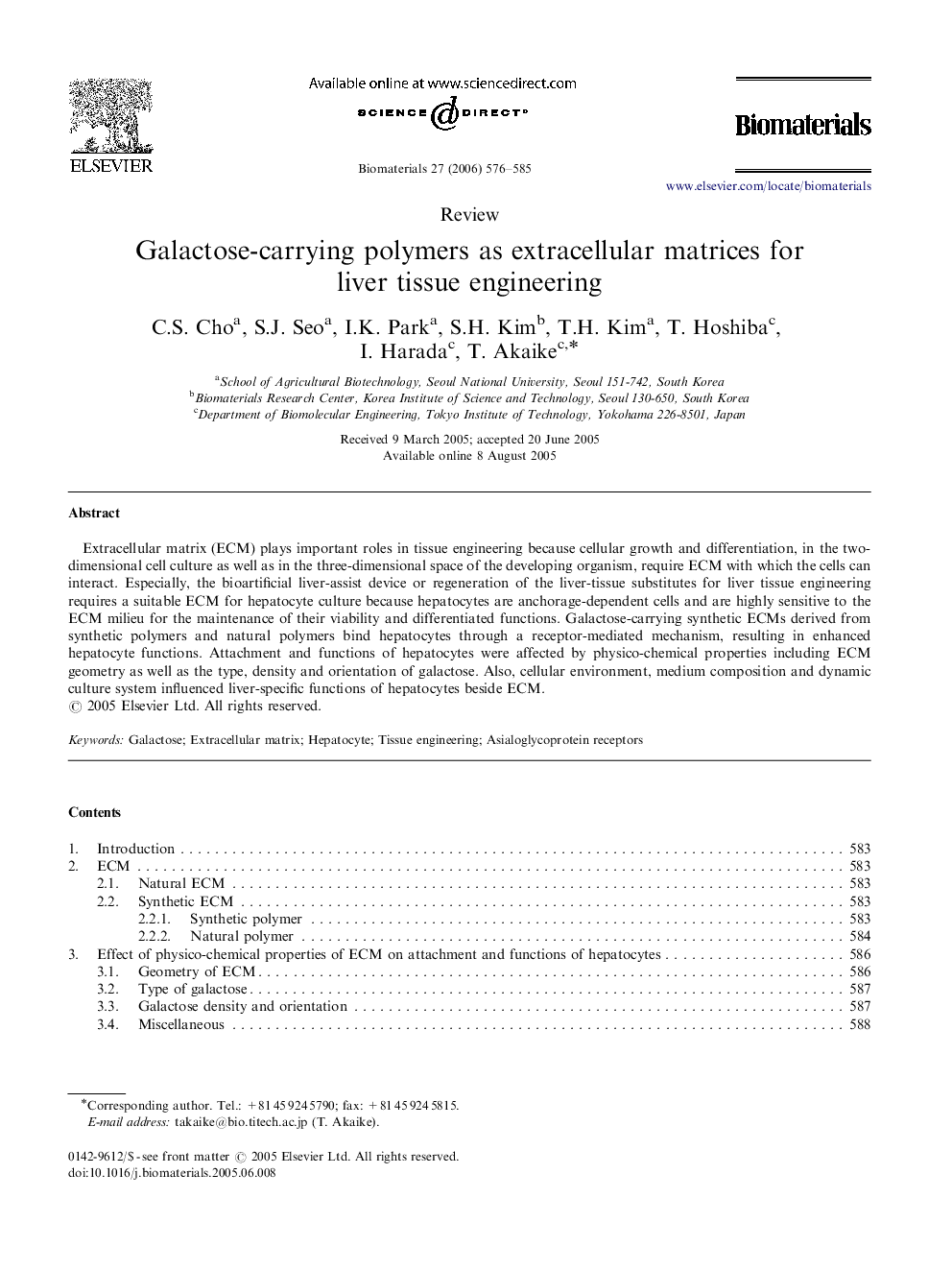| Article ID | Journal | Published Year | Pages | File Type |
|---|---|---|---|---|
| 11986 | Biomaterials | 2006 | 10 Pages |
Extracellular matrix (ECM) plays important roles in tissue engineering because cellular growth and differentiation, in the two-dimensional cell culture as well as in the three-dimensional space of the developing organism, require ECM with which the cells can interact. Especially, the bioartificial liver-assist device or regeneration of the liver-tissue substitutes for liver tissue engineering requires a suitable ECM for hepatocyte culture because hepatocytes are anchorage-dependent cells and are highly sensitive to the ECM milieu for the maintenance of their viability and differentiated functions. Galactose-carrying synthetic ECMs derived from synthetic polymers and natural polymers bind hepatocytes through a receptor-mediated mechanism, resulting in enhanced hepatocyte functions. Attachment and functions of hepatocytes were affected by physico-chemical properties including ECM geometry as well as the type, density and orientation of galactose. Also, cellular environment, medium composition and dynamic culture system influenced liver-specific functions of hepatocytes beside ECM.
